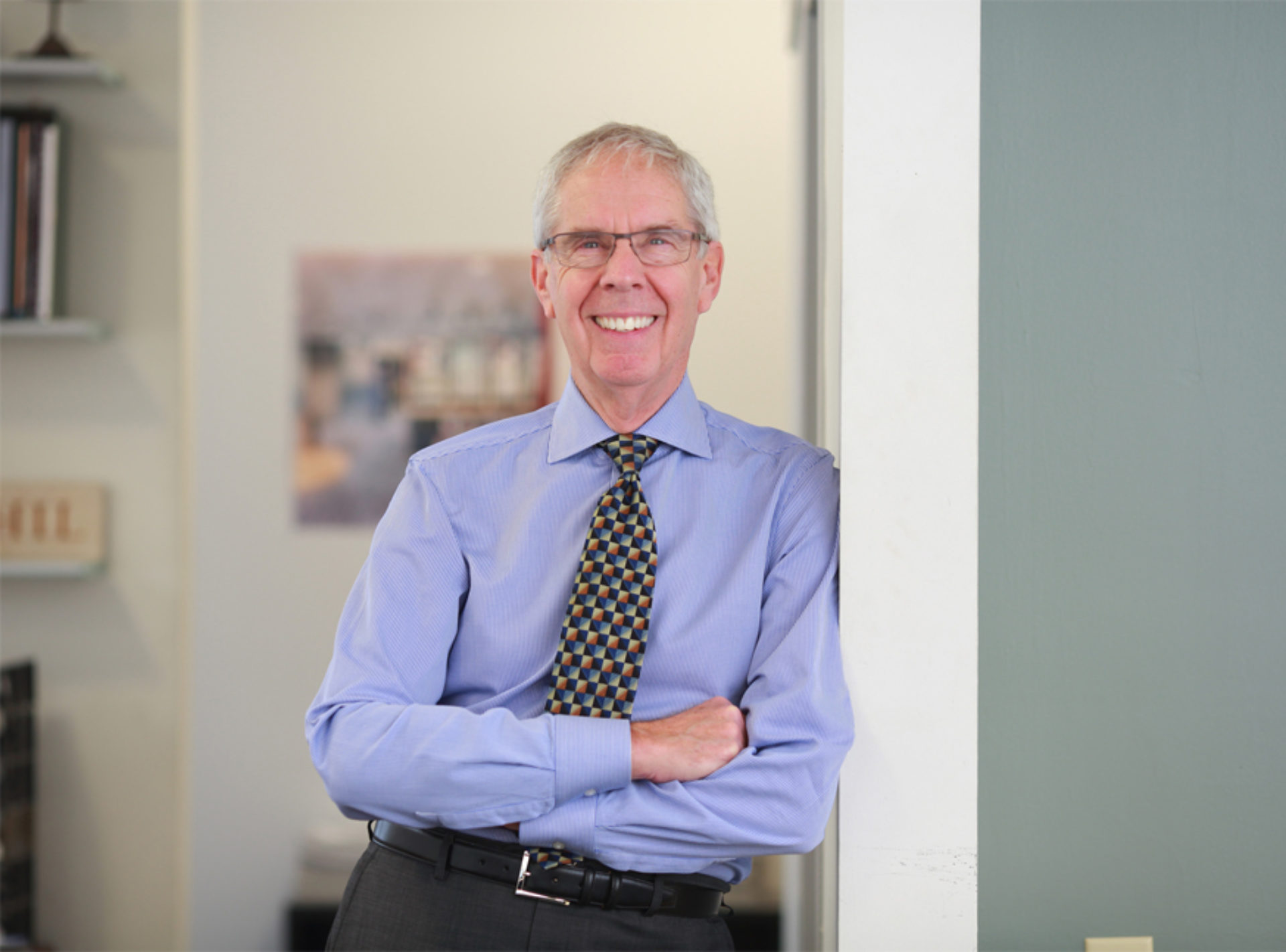

Peter Saylor
Principal, JacobsWyper Architects
A principal at JacobsWyper Architects, Peter Saylor has designed award-winning academic and cultural buildings for more than 40 years. In the interview that follows, Saylor articulates his design philosophy and approach to the Discovery Center.
What is your design philosophy?
We view every project as a unique set of circumstances. These are not problems to overcome, but rather, opportunities to explore. Understanding the way people and organizations operate is the foundation for how we create distinctive, inspiring environments that support our client’s objectives, which in turn contributes to their success.
What interested you and your team most about the Faith and Liberty Discovery Center Project?
Our design team embraced the opportunity to design a cultural destination in the heart of Independence National Park in the company of many other renowned cultural landmarks. We were particularly excited about working on a project whose message linked to the founding of the United States and the history of Philadelphia.
Were there some ‘aha!’ moments throughout the design process? Can you describe a few?
The challenges of integrating the FLDC museum experience within the first floor of an existing modern 1970’s era building stimulated extensive design team discussion. Early on we recognized the need to expand beyond the existing building to resolve the dilemma of how to distinguish a clearly visible and distinct entrance to the museum. This led to a series of “aha!” design moments that resulted in exploring the idea of “procession” as a vehicle to create an architectural destination. This “procession” guides visitors by employing dynamic landscape forms, an extensive illuminated metal arbor that wraps the building corner, and other architectural forms that differentiate from the rectilinear forms of the existing building. Situated along Market Street, one of the busiest corridors in Philadelphia, a preview of the FLDC experience will be accessible to the public through transparent glass walls.
What are some of the most striking and symbolic features of the design effort, and how do they tie into the Center’s mission?
Apart from the arbor mentioned above, perhaps one of the most visually defining features of the project is the entrance lobby, which includes a thirteen-foot-wide clear ‘Oculus’ skylight, that incorporates a large spiral sculpture that extends from the lobby floor to 20 feet above the roof. This circular theme emanates throughout from the interior circular exhibit space to the exterior design of the building. The curvature form on the exterior is constructed of faceted panels that elude to overlapping pages of a book. This visual dynamism helps allude to the experience within.
What are you most proud of being a part of this historic effort?
We are most proud of our firm’s role in coordinating the unification of the mission of the FLDC with Local Project’s remarkable exhibit design concept. Architects are like choreographers of the many professionals required to complete projects like this one. The result is a building that defines a collection of spaces that people will use in very specific ways. This project is both complex and serene with a vision that is inspiring, and we are proud to be a part of its creation.
What are your hopes and dreams for future visitors to the Faith and Liberty Discovery Center?
Our hope is that our efforts as architects and designers contributed to a space where visitors gain a better understanding of the role personal Faith and the quest for Liberty had in the founding of this country. Additionally, we hope people appreciate the unique importance the city of Philadelphia played as presented in the planned exhibits that connect to the city. This deeper link of mission and history will certainly benefit Philadelphia as a visitor destination.